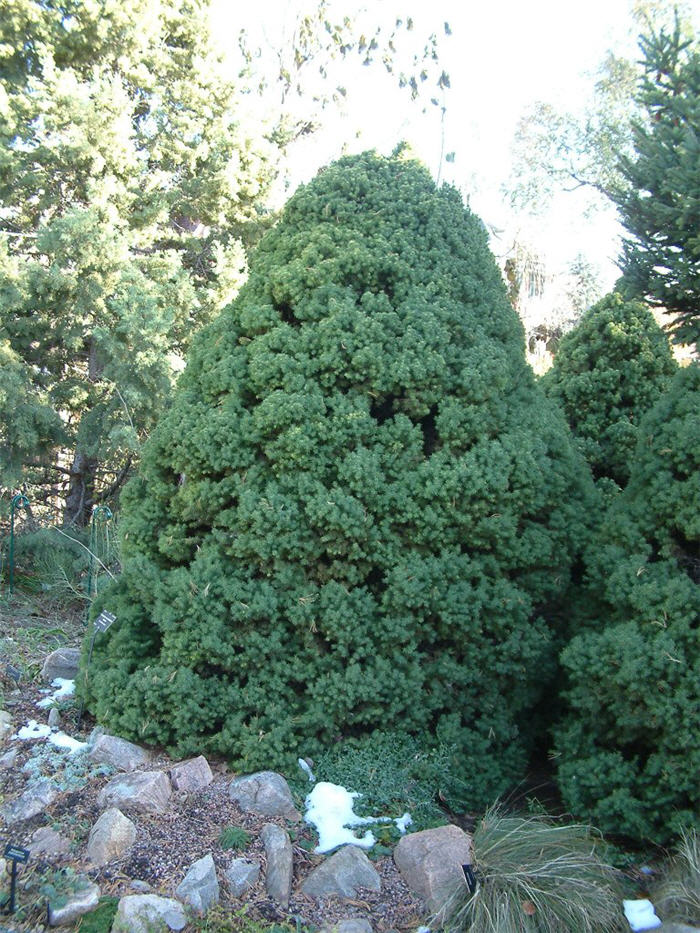| Botanical Name: Picea glauca 'Conica' | |
| Common Name: Dwarf Alberta Spruce |

-
Anatomy
-
Culture
-
Design
Plant Type
Conifer, Shrub
Height Range
6-12'
Flower Color
n/a
Flower Season
n/a
Leaf Color
Dark Green
Bark Color
Brown
Fruit Color
n/a
Fruit Season
n/a
Sun
Full, Half
Water
Medium, High
Growth Rate
Moderate
Soil Type
Sandy, Clay, Loam, Rocky
Soil Condition
Average, Rich, Poor, Well-drained
Soil pH
Acid, Neutral
Adverse Factors
n/a
Design Styles
English Cottage, Formal, Japanese
Accenting Features
Silhouette
Seasonal Interest
Winter
Location Uses
Perennial Border, Shrub Border, Foundation
Special Uses
Hedge, Small Spaces
Attracts Wildlife
n/a
Information by: Stephanie Duer
Photographer:
Photographer:
-
Description
-
Notes
Dwarf Alberta Spruce is the quintessential cone-shaped evergreen. Slow growing to 6 to 8 feet tall and 4 to 5 feet wide (though I have seen some very old ones that are nearly 10 feet), it forms a dense, cone-ish evergreen statement in the landscape. Use as an accent, or to contrast more natural or informally-shaped plants. There are some named cultivars available, distinguished by needle length, height, and other characteristics.
Grow in well drained, loamy soil. Though spruces typically grow in full sun, in our valley areas this plant performs best in partial shade. Particularly, avoid siting it where it will receive reflective heat from a building, wall, or fence, especially south or west facing. In the winter, this can cause the plant to bud out too ealy, risking cold damage of emerging needles; in the summer such a placement could result in scorching.